Daucus carota is commonly known as Queen Anne’s lace. It has several other famous names like Wild Carrot and Bird’s Nest. It is an herbaceous (without woody stem) and biennial plant (takes two years to flower). The general height of Daucus carota (bishop’s lace) ranges from 1 to 3.2 feet.
Daucus carota belongs to the family Apiaceae. The wild carrot loves to grow in relatively warmer climates and temperate regions. Temperate regions of Africa, Asia, Europe, and Australia are most suitable for its growth. A pretty arrangement of small flowers looks appealing and attractive in the context of gardening. It grows best in a medium level of sunlight and shades or heavy sunlight as well[1]Westmoreland, D. and C. Muntan, The influence of dark central florets on insect attraction and fruit production in Queen Anne’s Lace (Daucus carota L.). American Midland Naturalist, 1996: p. … Continue reading.
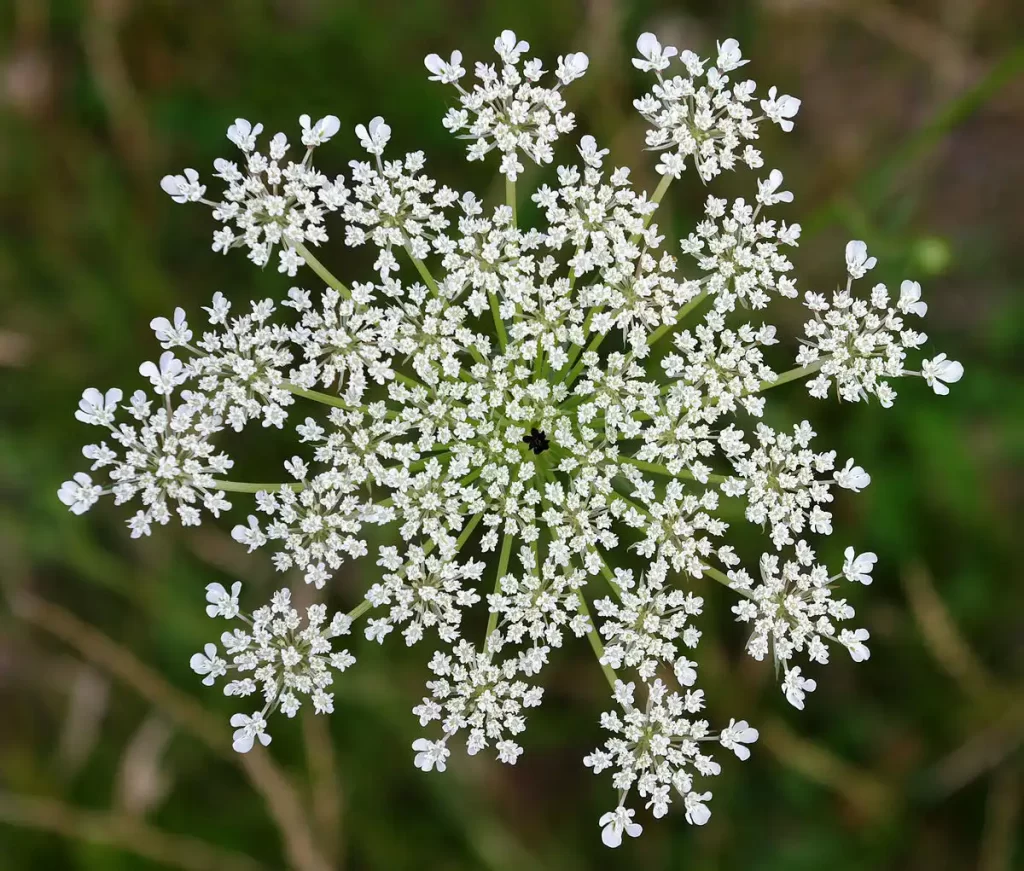
The stem of Daucus carota is herbaceous but stiff to support the vascular system and also covered with small hair-like structures. Its leaves are arranged in a specific manner around a common axis. One stalk of the leaf is covered with two rows of small leaflets. This arrangement is named tripinnate. A small leaf has a shape nearly like a triangle. In these two rows, the leaflets have alternate arrangements as shown below.
Another specification and reason of attraction for the gardeners is its pretty flower arrangement. Daucus carota has flowers that originated from a single origin and have the appearance of an umbrella-shaped covering. For this reason, its flower arrangement is termed umbel (umbrella-like covering). Dull white-colored flowers with sweet fragrances are produced. The Center of the umbel might have flowers of pink to violet and reddish colors.
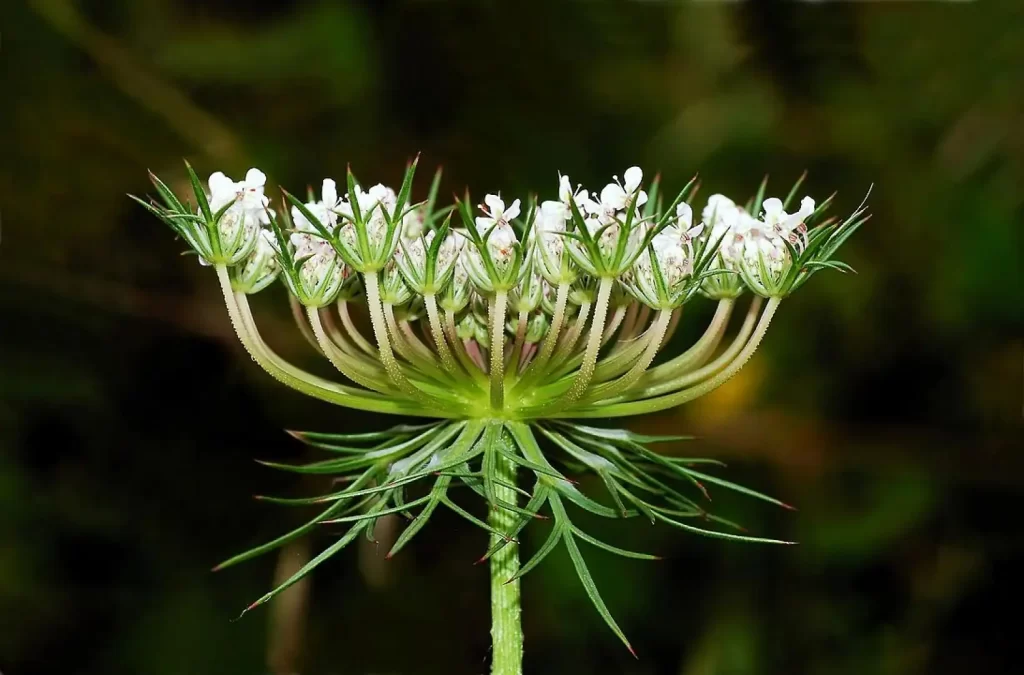
The umbel is folded at its ends when seeds are being developed. The wide covering becomes more congested when the umbel is folded resulting in a less wide structure. Its fruit is small, hairy, and oval attached to a small stalk. The endosperm leads to the growth of fruit. When the plant is completely dried; wind pressure makes the seeds dispersed. The colors of central flowers are for attracting insects; leading to effective pollination[2]Wilkinson, K., D. Westmoreland, and G.R. Westmoreland, Effects of spider predation on insect visitation and pollination of Queen Anne’s lace. American Midland Naturalist, 1991: p. 364-367. Read.
The central portion of the umbel is usually having darker flowers. These are here to attract the insects for the purpose of healthy and more often pollination. More the number of darker flowers more often the visitation. People get confused sometimes between Daucus carota and a deadly plant Poison Hemlock just because of their similarities in their appearances.
The distinctive feature of Daucus carota is its hairy stem and the tripinnate-type leaves. Even the smell of Daucus carota resembles the smell of carrot. While Poison Hemlock has a non-hairy stem. It is called wild carrot because its taste is not the same as common edible carrot[3]Jewiss-Gaines, A. and F.F. Hunter, Pollination ecology of Queen Anne’s Lace (Apiaceae: Daucus carota). 2012. Read.
Types and cultivars
1. Daucus carota (Daucus carota ‘Nantes’)
The common name of this cultivar is carrot. Its roots are edible, lack a core, and are 15 to 18 cm long having an orange to red color. This cultivar is sown in March, April, and May. This variety needs a full or partial shade of sunlight for growth. The soil must be neutral or acidic but well-drained for sowing over garden beds. It requires proper watering when planted in indoor pots. The shape of the root is cylindrical having flat or blunt ends[4]Alegria, C., et al., Quality attributes of shredded carrot (Daucus carota L. cv. Nantes) as affected by alternative decontamination processes to chlorine. Innovative Food Science & Emerging … Continue reading.
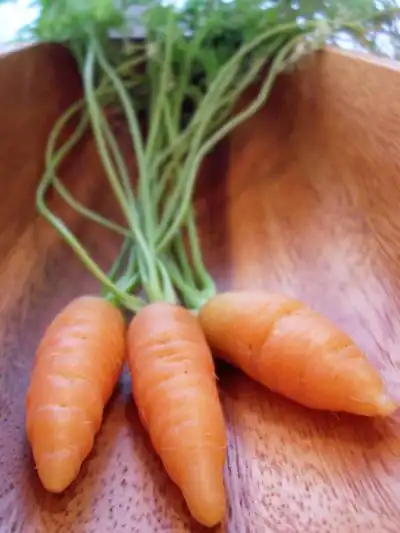
2. Little Finger Carrot (Daucus carota var. sativus)
This variety has an Asian origin. This is widely used as salad. Daucus carota var. sativus is also cooked. It has a full carrot taste and sharp orange skin. It is also grown in the almost same condition when compared to the Nantes type. Edible in most of the regions whether cooked or as a salad. This variety is also been observed for having deep purple root colors[5]Eisvand, H.R., et al., Effects of hydro‐priming and hormonal priming by gibberellin and salicylic acid on seed and seedling quality of carrot (Daucus carota var. sativus). 2011. Read.
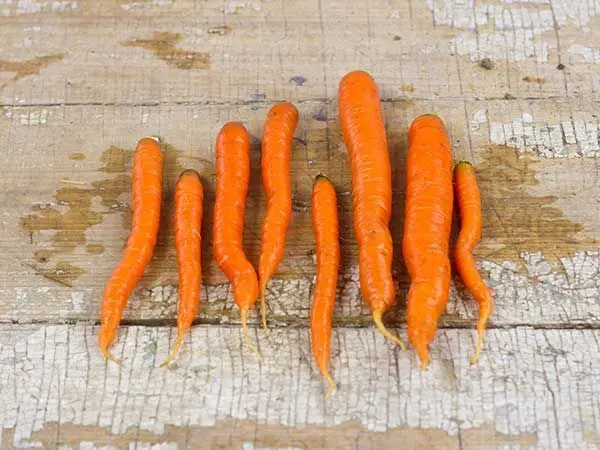
3. Daucus carota var. Atlas
Daucus carota var. Atlas is a small rounded and sweet carrot. The variety is available in most of the months of the year. Smooth and tasty carrot is eaten in several ways as a salad or cooked steamed. Used are stews and soups as well. Pesticides are sprayed to keep carrot root fly. Reddish orange is the color of this carrot variety rich with vitamin A. Less fungal diseases are seen and are also very suitable for canning and freezing[6]Surette, M.A., et al., Bacterial endophytes in processing carrots (Daucus carota L. var. sativus): their localization, population density, biodiversity and their effects on plant growth. Plant and … Continue reading.
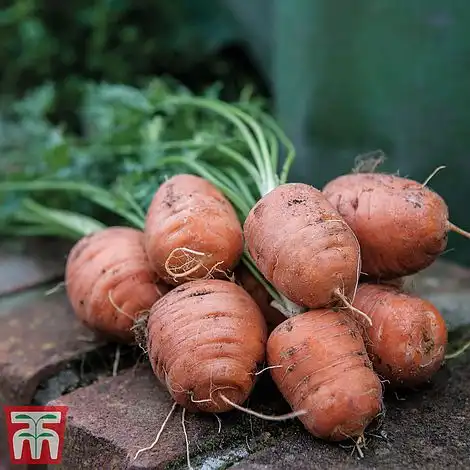
4. Daucus carota ssp. sativus ‘Purple Haze’
The roots of this plant are brown to purple and also are edible with good taste. Seeds are used to grow this plant in the early summer. This species is relatively more prone to insect pest attacks. Majorly, wireworms, slugs, snails, aphids, and carrot flies are important insect pests. Almost the same propagating conditions are required in this variety. Foot and root and black rot of carrot are the notorious fungal agents for destroying the crop[7]Montilla, E.C., et al., Anthocyanin composition of black carrot (Daucus carota ssp. sativus var. atrorubens Alef.) cultivars Antonina, Beta Sweet, Deep Purple, and Purple Haze. Journal of … Continue reading.
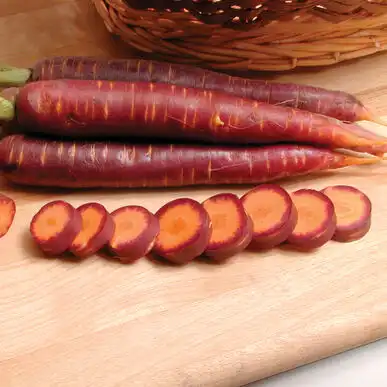
Propagation of Daucus Carota
Daucus carota prefers to grow indoors when planted by sowing seeds after winter. It spreads easily in nutrient-rich soil. The soil must be neutral or slightly acidic. Loamy soil is preferable for its healthy foliage. One can also grow Daucus carota directly in garden beds made with nutrient-rich loamy soil. It takes a year for its foliage growth and the second year is specifically related to its flowering. As a pretty ornamental plant, it is grown on a large scale and helps to fill the empty spaces of one’s garden.
You do not need to worry about its propagation because once it has grown well; it will propagate itself with the help of insect pollinators. Butterflies moths and some of the garden bees find its central colored floret attractive and it seems like food to them which helps Daucus carota to get spread and pollinated well[8]Pant, B. and S. Manandhar, In vitro propagation of carrot (Daucus carota) L. Scientific world, 2007. 5(5): p. 51-53. Read.
Seed sowing
Its seeds are sown for cultivation in loamy textured soil with neutral or acidic soil. Soil is softly watered and seeds are sown nearly over the surface. These seeds are slightly covered with soil. Warmth climate helps to grow Daucus carota faster. After producing flowers in the second year oval seeds and small fruits are observed. And the plant gets dried, de-headed, and regrowns itself. If planted once when it has been spread well in the garden or indoor pots; it is very less likely to replant it. Because its natural pollinators like aphids, ladybugs, butterflies, and bees pollinate it and spread it in long patches[9]Latif, Z., I. Nasir, and S. Riazuddin, Indigenous production of synthetic seeds in Daucus carota. Pak. J. Bot, 2007. 39(3): p. 849-855. Read.
Problems with Daucus Carota
Papilio polyxenes (also called black swallowtail) is a caterpillar that feeds on a wild carrot. Almost the whole family of Apiaceae is affected by this insect pest. It eats the leaves and destroys the foliage. Psila rosae (commonly known as carrot root fly), as per name indication damages the root system of wild carrots.
It feeds on the fluid and mass of the root. Larvae of the moth Melanchra picta also destroy the foliage of wild carrots. Other mild fungal infections also damage it. It is also the carrier for these fungal and insect pests to healthy crops.
Not much care is needed for keeping wild carrots healthy except for proper timely watering. It spread by self-seeding. Dieback and give rise to new foliage. Pests for wild carrots are controlled by integrated pest management[10]Rome, C. and C. Lucero, Wild Carrot (Daucus carota) management in the Dungeness Valley, Washington, United States: The power of citizen scientists to leverage policy change. Citizen Science: Theory … Continue reading.
References
| ↑1 | Westmoreland, D. and C. Muntan, The influence of dark central florets on insect attraction and fruit production in Queen Anne’s Lace (Daucus carota L.). American Midland Naturalist, 1996: p. 122-129. Read |
|---|---|
| ↑2 | Wilkinson, K., D. Westmoreland, and G.R. Westmoreland, Effects of spider predation on insect visitation and pollination of Queen Anne’s lace. American Midland Naturalist, 1991: p. 364-367. Read |
| ↑3 | Jewiss-Gaines, A. and F.F. Hunter, Pollination ecology of Queen Anne’s Lace (Apiaceae: Daucus carota). 2012. Read |
| ↑4 | Alegria, C., et al., Quality attributes of shredded carrot (Daucus carota L. cv. Nantes) as affected by alternative decontamination processes to chlorine. Innovative Food Science & Emerging Technologies, 2009. 10(1): p. 61-69. Read |
| ↑5 | Eisvand, H.R., et al., Effects of hydro‐priming and hormonal priming by gibberellin and salicylic acid on seed and seedling quality of carrot (Daucus carota var. sativus). 2011. Read |
| ↑6 | Surette, M.A., et al., Bacterial endophytes in processing carrots (Daucus carota L. var. sativus): their localization, population density, biodiversity and their effects on plant growth. Plant and soil, 2003. 253(2): p. 381-390. Read |
| ↑7 | Montilla, E.C., et al., Anthocyanin composition of black carrot (Daucus carota ssp. sativus var. atrorubens Alef.) cultivars Antonina, Beta Sweet, Deep Purple, and Purple Haze. Journal of Agricultural and Food Chemistry, 2011. 59(7): p. 3385-3390. Read |
| ↑8 | Pant, B. and S. Manandhar, In vitro propagation of carrot (Daucus carota) L. Scientific world, 2007. 5(5): p. 51-53. Read |
| ↑9 | Latif, Z., I. Nasir, and S. Riazuddin, Indigenous production of synthetic seeds in Daucus carota. Pak. J. Bot, 2007. 39(3): p. 849-855. Read |
| ↑10 | Rome, C. and C. Lucero, Wild Carrot (Daucus carota) management in the Dungeness Valley, Washington, United States: The power of citizen scientists to leverage policy change. Citizen Science: Theory and Practice, 2019. 4(1). Read |



